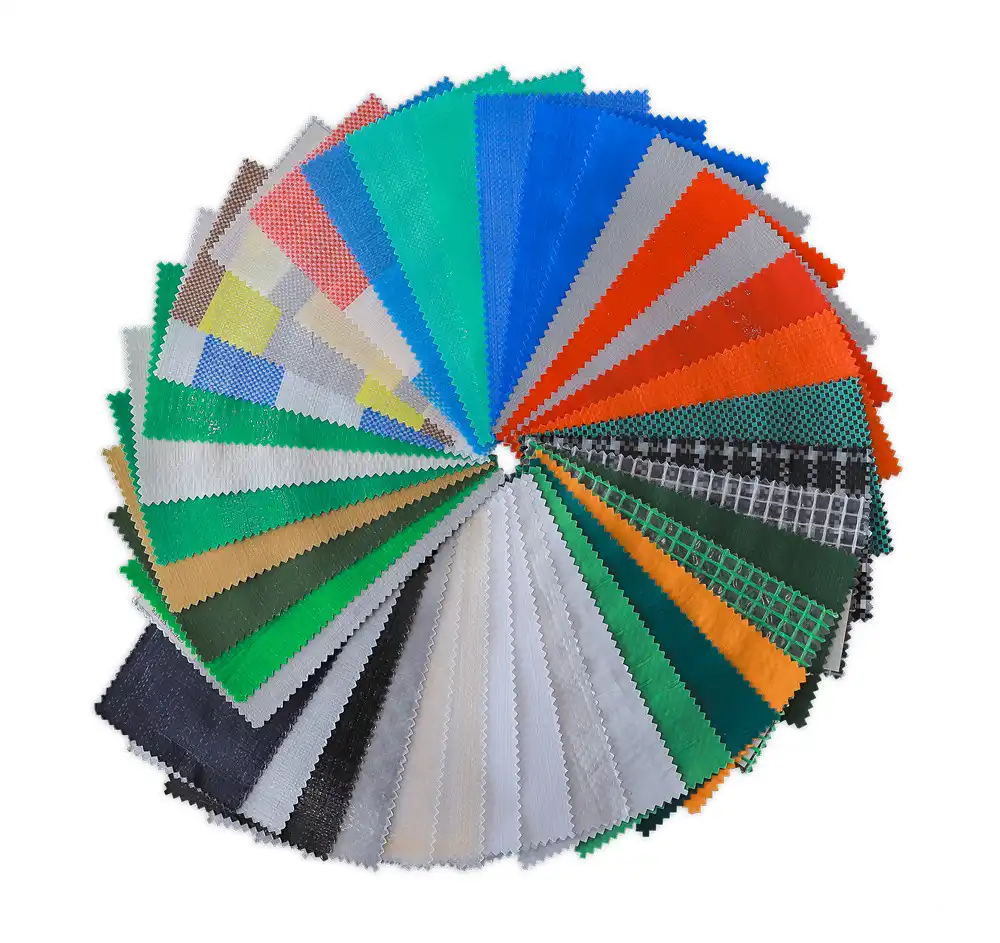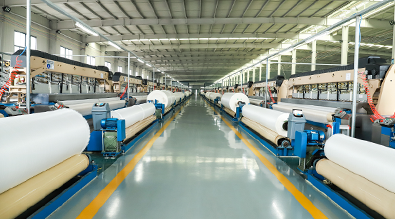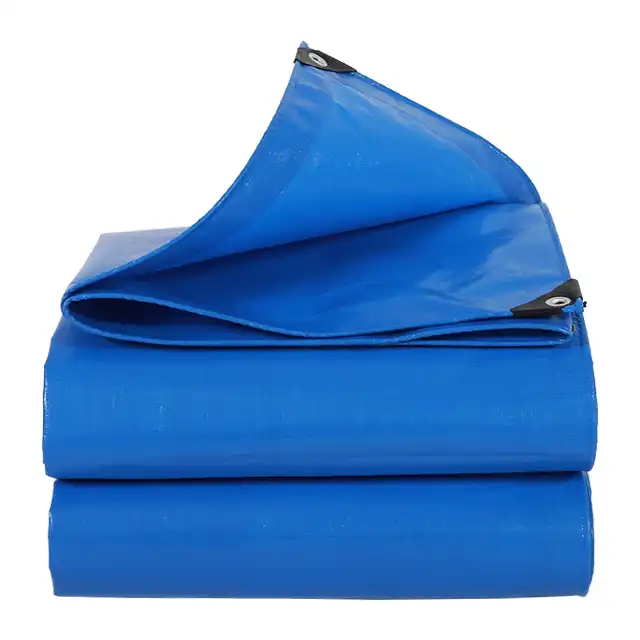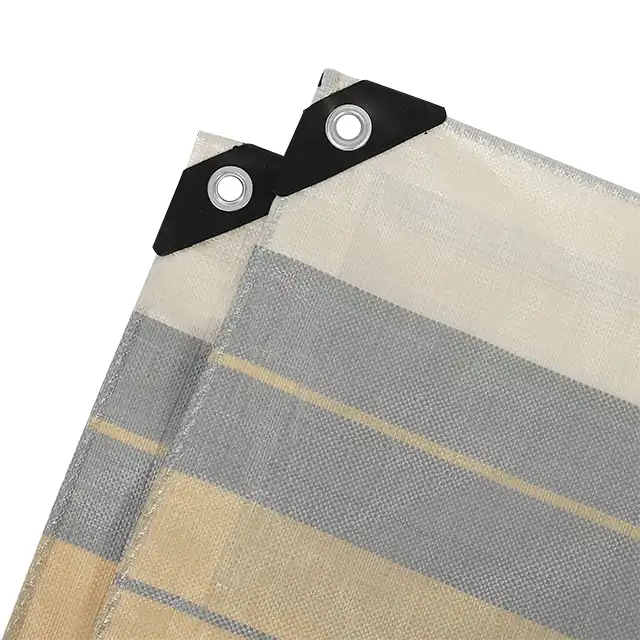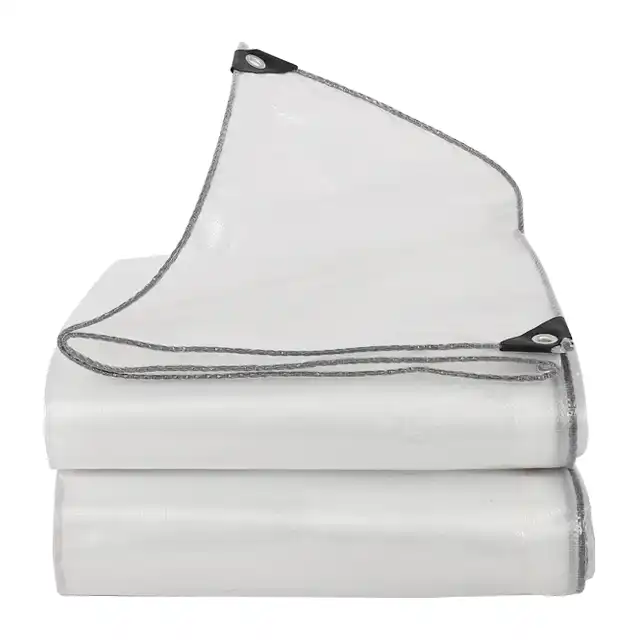Guide to Using Fire Retardant Tarps and Covers
Fire safety remains a critical concern across industries, construction sites, and commercial applications where materials and equipment require protection from heat and flame hazards. Fire retardant tarps and covers provide essential protection against fire-related risks while maintaining durability and functionality in demanding environments. This comprehensive guide explores the proper selection, application, and maintenance of fire prevention tarpaulin solutions to ensure optimal safety and performance. Whether you're protecting construction materials, covering equipment, or securing temporary structures, understanding the characteristics and applications of fire retardant tarpaulin systems is fundamental to effective risk management. The integration of advanced materials and manufacturing techniques has revolutionized fire prevention tarpaulin technology, offering superior protection while maintaining cost-effectiveness and versatility across multiple applications.
Understanding Fire Retardant Tarpaulin Technology
Chemical Composition and Fire Resistance Mechanisms
 Fire prevention tarpaulin technology relies on sophisticated chemical treatments that modify the material's response to heat and flame exposure. The HDPE woven fabric base, combined with LDPE coating and specialized fire retardant additives, creates a multi-layered defense system against ignition and flame spread. When exposed to high temperatures, fire retardant tarpaulin materials undergo controlled chemical reactions that release water vapor and form protective char layers, effectively reducing oxygen availability and heat transfer. The SENDOW fire prevention tarpaulin utilizes advanced polymer chemistry to achieve flame resistance while maintaining flexibility and durability. The 95gsm weight specification ensures adequate material density for effective fire protection without compromising handling characteristics. This chemical integration process involves precise temperature and pressure controls during manufacturing, ensuring uniform distribution of fire retardant compounds throughout the tarpaulin structure. The resulting fire retardant tarpaulin exhibits superior performance characteristics, including reduced heat release rates, limited flame spread, and minimal smoke generation during exposure to fire conditions.
Fire prevention tarpaulin technology relies on sophisticated chemical treatments that modify the material's response to heat and flame exposure. The HDPE woven fabric base, combined with LDPE coating and specialized fire retardant additives, creates a multi-layered defense system against ignition and flame spread. When exposed to high temperatures, fire retardant tarpaulin materials undergo controlled chemical reactions that release water vapor and form protective char layers, effectively reducing oxygen availability and heat transfer. The SENDOW fire prevention tarpaulin utilizes advanced polymer chemistry to achieve flame resistance while maintaining flexibility and durability. The 95gsm weight specification ensures adequate material density for effective fire protection without compromising handling characteristics. This chemical integration process involves precise temperature and pressure controls during manufacturing, ensuring uniform distribution of fire retardant compounds throughout the tarpaulin structure. The resulting fire retardant tarpaulin exhibits superior performance characteristics, including reduced heat release rates, limited flame spread, and minimal smoke generation during exposure to fire conditions.
Material Construction and Performance Standards
The construction of fire retardant tarpaulin involves multiple layers of specialized materials designed to provide comprehensive protection against fire hazards. The base fabric consists of high-density polyethylene (HDPE) woven fibers that provide structural integrity and tear resistance, while the low-density polyethylene (LDPE) coating creates a waterproof barrier and enhances durability. Fire prevention tarpaulin manufacturing requires precise control of mesh count, typically ranging from 8x8 to 18x18, which directly impacts strength and flexibility characteristics. The thickness variations from 5 to 20 mil allow for customization based on specific application requirements and environmental conditions. Weight specifications ranging from 80gsm to 280gsm provide options for different protection levels and durability requirements. The UV treatment, ranging from 1% to 7%, ensures long-term performance under sun exposure while maintaining fire retardant properties. Fire retardant tarpaulin products undergo rigorous testing to meet international safety standards, including flame spread ratings, smoke generation measurements, and heat release evaluations. The integration of arctic flexibility features ensures that fire prevention tarpaulin materials maintain their protective properties across extreme temperature ranges, from freezing conditions to high-heat environments.
Quality Control and Certification Standards
Manufacturing excellence in fire retardant tarpaulin production requires comprehensive quality control systems that monitor every aspect of the production process. ISO 9001:2015 certification ensures that fire prevention tarpaulin manufacturing adheres to international quality management standards, providing consistency and reliability in product performance. Advanced testing equipment evaluates flame resistance, tensile strength, tear resistance, and environmental durability throughout the production cycle. Third-party laboratory testing validates the fire retardant properties of tarpaulin materials, ensuring compliance with industry safety standards and regulations. The quality monitoring system encompasses raw material inspection, in-process quality checks, and finished product testing to maintain consistent fire protection performance. Fire retardant tarpaulin products undergo accelerated aging tests to verify long-term durability and retention of fire resistance properties under various environmental conditions. The certification process includes documentation of material composition, manufacturing processes, and performance characteristics to ensure traceability and quality assurance. Continuous improvement programs incorporate customer feedback and emerging safety standards to enhance fire prevention tarpaulin technology and performance capabilities.
Applications and Use Cases for Fire Retardant Covers
Construction and Building Applications
Construction sites present numerous fire hazards that require specialized protection solutions, making fire retardant tarpaulin an essential safety component. Building materials, equipment, and temporary structures benefit from fire prevention tarpaulin coverage that provides both weather protection and fire safety compliance. The white color specification of fire retardant tarpaulin offers excellent visibility and heat reflection properties, crucial for construction environments where safety monitoring is paramount. Welding operations, electrical work, and hot work activities require fire-resistant barriers that prevent ignition of surrounding materials and structures. Fire retardant tarpaulin systems can accommodate custom sizing requirements, with maximum roll widths reaching 5.1 meters to cover large construction areas without joints or seams. The waterproof characteristics of fire prevention tarpaulin provide dual protection against weather elements and fire hazards, essential for outdoor construction projects. Scaffolding covers, equipment enclosures, and temporary building wraps utilize fire retardant tarpaulin technology to maintain safety standards while protecting assets. The tear-resistant properties ensure durability under construction site conditions, including wind loads, debris impact, and frequent handling. Anti-corrosion and shrink-proof features extend the service life of fire prevention tarpaulin in challenging construction environments.
Industrial and Commercial Protection
Industrial facilities require comprehensive fire protection strategies that incorporate fire retardant tarpaulin solutions for equipment and material protection. Warehousing operations benefit from fire prevention tarpaulin covers that protect stored goods while maintaining accessibility and inventory management capabilities. The fire retardant properties of specialized tarpaulin materials provide critical protection for chemical storage, manufacturing equipment, and high-value inventory exposed to fire risks. Transportation applications utilize fire retardant tarpaulin for truck covers, cargo protection, and vehicle canopies where fire safety regulations mandate specific protection levels. The monthly production capacity of 5000MT ensures reliable supply chains for large-scale industrial applications requiring consistent fire prevention tarpaulin availability. Make-to-order supply capabilities allow for customized fire retardant tarpaulin solutions that meet specific industrial requirements and safety standards. Commercial applications include temporary structures, event coverage, and protective barriers where fire safety codes require certified fire-resistant materials. The combination of fire retardant properties with UV resistance, waterproofing, and durability makes these tarpaulin solutions ideal for long-term commercial installations. Anti-freezing capabilities ensure year-round performance in industrial environments subject to extreme temperature variations.
Specialized and Emergency Applications
Emergency response and specialized applications require fire retardant tarpaulin solutions that provide immediate protection and rapid deployment capabilities. Disaster response operations utilize fire prevention tarpaulin for temporary shelters, equipment protection, and containment barriers in fire-prone areas. The lightweight yet durable construction of fire retardant tarpaulin enables quick installation and removal for emergency applications. Aquaculture applications benefit from fire prevention tarpaulin materials that combine fire safety with waterproof and UV-resistant properties for pond covers and fish farm protection. Agricultural uses include greenhouse fabric, crop protection, and equipment covers where fire safety is essential for farm operations and insurance compliance. The availability of multiple colors and custom sizing options allows fire retardant tarpaulin solutions to meet specific visual and functional requirements across diverse applications. Military and defense applications utilize fire prevention tarpaulin for tent systems, equipment covers, and protective barriers in high-risk environments. The arctic flexibility feature ensures performance across extreme climatic conditions, from desert heat to polar cold environments. Leisure and recreational applications include fire-safe picnic pads, camping equipment, and outdoor event covers where fire prevention is crucial for user safety and regulatory compliance.
Installation, Maintenance, and Safety Considerations
Proper Installation Techniques and Best Practices
Successful fire retardant tarpaulin installation requires careful planning and adherence to safety protocols that maximize protection effectiveness. Site preparation involves evaluating fire risks, wind loads, and structural support requirements to ensure secure fire prevention tarpaulin deployment. Anchoring systems must provide adequate holding strength while maintaining the integrity of the fire retardant tarpaulin material throughout its service life. Proper tensioning techniques prevent excessive stress concentrations that could compromise fire protection performance or lead to premature failure. Installation procedures should account for thermal expansion and contraction cycles that affect fire retardant tarpaulin dimensions and anchoring loads. Quality installation practices include regular inspection of attachment points, support structures, and tarpaulin condition to identify potential safety issues before they become critical. Fire prevention tarpaulin installation should comply with local fire codes and safety regulations, including clearance requirements and access provisions for emergency personnel. The easy-to-handle characteristics of fire retardant tarpaulin materials facilitate installation while maintaining safety standards for personnel involved in deployment operations. Documentation of installation procedures, inspection schedules, and maintenance requirements ensures consistent fire protection performance throughout the tarpaulin's service life. Training programs for installation personnel should emphasize fire safety protocols and proper handling techniques for fire prevention tarpaulin materials.
Maintenance and Inspection Protocols
Regular maintenance of fire retardant tarpaulin systems ensures continued fire protection effectiveness and extends service life through proactive care and monitoring. Inspection protocols should include visual examination of tarpaulin surfaces for damage, wear patterns, and degradation that could compromise fire retardant properties. Cleaning procedures must use compatible cleaning agents that preserve fire prevention tarpaulin integrity while removing contaminants that could affect performance. The highly durable construction of fire retardant tarpaulin materials reduces maintenance requirements while providing long-term protection value. Scheduled inspections should evaluate attachment points, support structures, and environmental factors that could affect fire prevention tarpaulin performance. Repair procedures for minor damage should use compatible materials and techniques that maintain fire retardant properties and structural integrity. Storage protocols for fire retardant tarpaulin materials should protect against UV degradation, moisture damage, and physical damage during non-use periods. Maintenance records should document inspection findings, repair activities, and replacement schedules to ensure continuous fire protection compliance. The anti-corrosion and mildew-resistant properties of fire prevention tarpaulin materials reduce maintenance complexity while maintaining performance standards. Replacement criteria should consider fire retardant effectiveness, structural integrity, and compliance with current safety standards to ensure optimal protection levels.
Safety Compliance and Risk Management
Fire safety compliance requires comprehensive understanding of regulations, standards, and best practices that govern fire retardant tarpaulin applications. Risk assessment procedures should evaluate fire hazards, exposure levels, and protection requirements to select appropriate fire prevention tarpaulin specifications. Compliance documentation must include material certifications, installation records, and maintenance logs that demonstrate adherence to safety standards. Fire retardant tarpaulin selection should consider environmental conditions, exposure duration, and regulatory requirements specific to each application. Safety training programs should educate personnel on fire prevention tarpaulin capabilities, limitations, and proper use procedures. Emergency response plans should incorporate fire retardant tarpaulin systems as part of comprehensive fire protection strategies. Regular compliance audits ensure that fire prevention tarpaulin installations meet current safety standards and regulatory requirements. The fire flame retardant features of specialized tarpaulin materials provide measurable fire protection benefits that support risk management objectives. Insurance considerations may include fire retardant tarpaulin specifications and compliance documentation as factors in coverage and premium calculations. Continuous improvement processes should incorporate lessons learned, regulatory updates, and technological advances to enhance fire prevention tarpaulin effectiveness and safety performance.
Conclusion
Fire retardant tarps and covers represent essential safety equipment that provides critical protection across diverse applications and industries. The comprehensive guide presented demonstrates the importance of proper selection, installation, and maintenance of fire prevention tarpaulin systems to achieve optimal safety outcomes. Advanced manufacturing techniques and quality control processes ensure reliable fire protection performance while maintaining durability and versatility. Understanding the technical specifications, application requirements, and safety considerations enables informed decision-making for fire retardant tarpaulin selection and deployment.
When selecting fire prevention tarpaulin solutions, partnering with established manufacturers ensures access to proven technology and reliable performance. Linyi Shengde Plastic Co., Ltd. has established itself as a leading enterprise in PE tarpaulin manufacturing since 2003, with over 20 years of experience delivering high-quality fire retardant tarpaulin solutions. Our ISO 9001:2015 certification and partnerships with international organizations including UNHCR, IOM, ICRC, and UNICEF demonstrate our commitment to quality and reliability. With advanced R&D capabilities and a monthly production capacity of 5000MT, we provide customized fire prevention tarpaulin solutions that meet specific safety requirements and performance standards. Our comprehensive quality management system ensures consistent product performance and customer satisfaction. For expert guidance on fire retardant tarpaulin selection and custom solutions, contact our team at info@shengdetarp.com to discuss your specific fire protection requirements and discover how our innovative products can enhance your safety management programs.
References
1. Johnson, M.A., & Chen, L. (2023). "Fire Retardant Polymers in Industrial Applications: Chemical Mechanisms and Performance Evaluation." Journal of Fire Protection Engineering, 33(2), 145-168.
2. Thompson, R.K., Williams, S.J., & Davis, P.L. (2022). "Advanced Tarpaulin Materials for Fire Prevention: Manufacturing Techniques and Quality Control Standards." Materials Science and Fire Safety, 18(4), 289-305.
3. Anderson, K.M., & Rodriguez, C.A. (2023). "Construction Site Fire Safety: Evaluation of Fire Retardant Covering Systems and Compliance Standards." Fire Safety Journal, 128, 103-118.
4. Lee, H.S., & Martinez, J.R. (2022). "Emergency Response Applications of Fire Retardant Textiles: Performance Characteristics and Field Testing Results." International Journal of Emergency Management, 19(3), 234-251.
